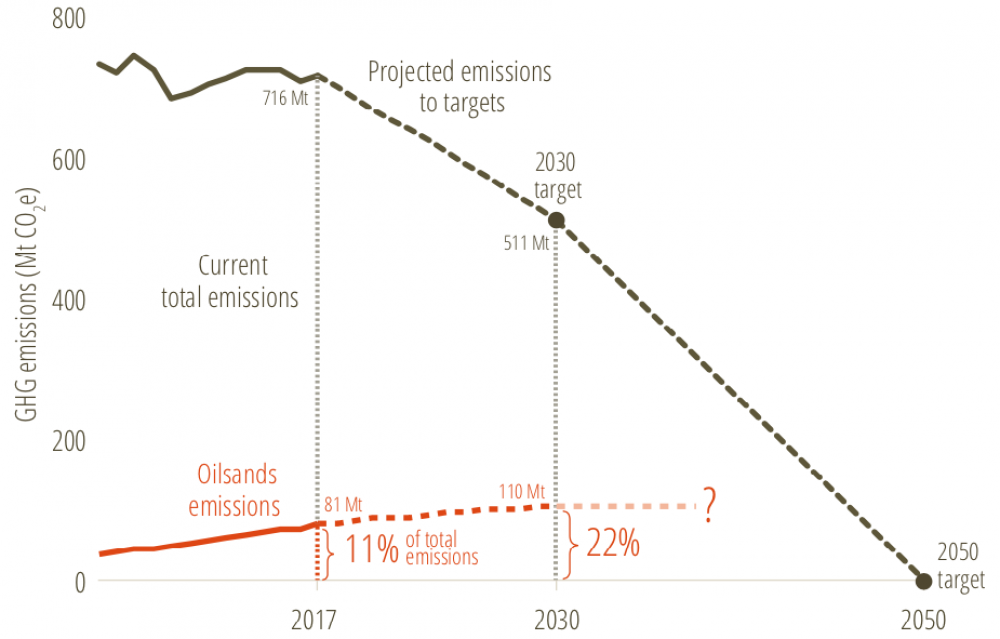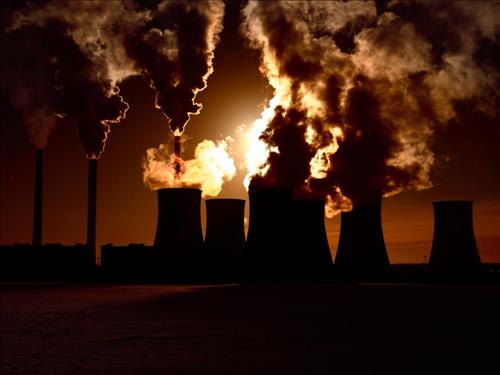The collision course between overall emissions and national climate commitments
The oil and gas industry has made big contributions to Canadian society: providing jobs, technology and research excellence, while warming homes, fuelling cars and powering our electricity grids. Today, the oil and gas sector is facing unprecedented pressures. While dramatic fluctuations in the price of energy commodities are not new, increasing automation, adoption of new disruptive technologies, shifting market demands, and climate commitments are reshaping the future of this sector. Business-as-usual no longer applies — significant changes are necessary.
In a continuing effort to depolarize the conversation, this report seeks to help establish a basic, commonly agreed-upon set of facts about Alberta’s oilsands, their emissions performance and trajectories, and what Canada’s commitment to achieve deep decarbonization will mean for the sector.
Download the full report, or read the Executive Summary below.
Executive summary
Alberta’s oilsands are at a crossroads.
The oil and gas industry has made big contributions to Canadian society: providing jobs, technology and research excellence, while warming homes, fuelling cars and powering our electricity grids. Today, the oil and gas sector is facing unprecedented pressures. While dramatic fluctuations in the price of energy commodities are not new, increasing automation, adoption of new disruptive technologies, shifting market demands, and climate commitments are reshaping the future of this sector. Business-as-usual no longer applies — significant changes are necessary.
In a continuing effort to depolarize the conversation, this report seeks to help establish a basic, commonly agreed-upon set of facts about Alberta’s oilsands, their emissions performance and trajectories, and what Canada’s commitment to achieve deep decarbonization will mean for the sector.
Key points:
- Carbon emissions from the oilsands sector are the fastest-growing source of emissions in Canada. This continuing upward trajectory not only reduces the country’s ability to meet its 2030 reduction commitments, but is on a clear collision course with Canada’s plan to become carbon-neutral by 2050. (Figure 1.)
 Figure 1. Share of the oilsands emissions in national carbon budget to meet Canada’s 2030 target
Figure 1. Share of the oilsands emissions in national carbon budget to meet Canada’s 2030 target
- Oilsands products are not homogeneous and there is a wide range in performance when it comes to carbon emissions intensity. As a result of variations in bitumen quality and extraction technologies, the range between the highest and lowest upstream emissions intensity per barrel is nearly threefold.
- The oilsands industry has worked toward decreasing the emissions intensity of its products in the past decades. Continuous improvements have reduced the carbon intensity of specific oilsands products, ranging from a 4% to 21% reduction since 2009.
- Despite these improvements in carbon intensity, absolute carbon emissions from the oilsands continue to increase overall, as growth in production outpaces gains from reductions in per-barrel intensity.
- Studies reviewed for this report consistently find oilsands products to be more carbon intensive than lighter, conventional oil sources. Recognizing limitations of emissions intensity research and the challenge of comparing studies, the best estimate currently available suggests a barrel of oil produced in Canada is associated on average with 70% more GHG emissions than the average crude produced globally.
- Acknowledging oil demand will not disappear overnight, most outlooks predict demand will plateau or decline within the next decade. Subsequent global shifts toward lower-intensity energy options are likely to put more carbon-intense crudes — such as the bulk of oilsands products — at risk over the next decade.
- The rapid development and deployment of breakthrough technologies — as opposed to incremental improvements — is needed for the sector to decrease its absolute carbon emissions in line with our climate commitments, and to remain competitive as global energy systems change.
Recognizing the improvements that the oilsands industry has made to date and the commitments leading companies have announced to achieve ambitious targets in the future, there is still a need for the sector to embrace its responsibility to reduce overall carbon emissions in accordance with Canada’s 2030 and 2050 targets.
The Pembina Institute calls for both the Alberta and federal government to recognize the willingness of leading companies to adopt aggressive decarbonization targets, as well as mounting investor pressure to decarbonize the sector, and implement policies that will drive toward carbon-neutral — or even carbon-negative — oilsands production.
It’s time to have a national conversation about how to reconcile oilsands emissions with Canada’s goal to decarbonize its economy by 2050. The intention of this report, carefully and explicitly supported by available evidence and research, is to further fact-based dialogue, as we all embark on this tough, but necessary Canadian conversation.
Recommendations to improve oilsands climate performance
1. Establish strong regulations to decarbonize the industry
Intentional effort is required to encourage a shift toward low- and zero-carbon production, by creating strong incentives for the development and deployment of breakthrough innovation. Recognizing the willingness of leading companies to adopt aggressive decarbonization targets, as well as mounting investor pressure to decarbonize the sector, governments need to implement policies that will drive carbon-neutral — or even carbon-negative — oilsands production.
2. Define and enforce sector emissions targets for 2030 and 2050, with five-year increments
Meeting our 2030 and 2050 climate targets will require all sectors of our economy — and all Canadians — to do their fair share to contribute to the global effort of limiting the average temperature increase to 1.5°C. Decreasing GHG emissions reduction targets need to be set for the oil and gas sector, in five-year increments that would allow Canada to meet its 2030 national objective and its pledge to become a net-zero carbon emitter by 2050.
3. Support an innovation ecosystem to deliver breakthrough technologies
A robust ecosystem to support innovation, research and development, needs to be funded and fostered so it can deploy solutions aimed at delivering breakthrough reductions — beyond incremental improvements — in emissions of current oilsands projects, as well as non-combustion uses of Alberta’s oil and gas resources.
4. Improve emissions monitoring and reporting
Existing measurement, monitoring and reporting processes for oilsands emissions must be reviewed, strengthened and standardized in order to produce coherent data and enhance the transparency of the sector. As well, further analysis looking at existing and upcoming technology pathways is required to better situate oilsands products’ carbon intensity on the global supply curve.
5. Appoint credible and effective energy regulators
Effective energy regulators are needed both provincially and federally. They must be transparent and independent, with the ability to incorporate robust environmental and climate considerations into their decision-making, while having both the mandate to enforce regulations and the capacity to follow through on that enforcement. SOURCE






















/https://www.thestar.com/content/dam/thestar/opinion/star-columnists/2019/05/14/jagmeet-singhs-call-for-fossil-fuels-ban-leapfrogs-the-leap-manifesto/ajw104546487.jpg)